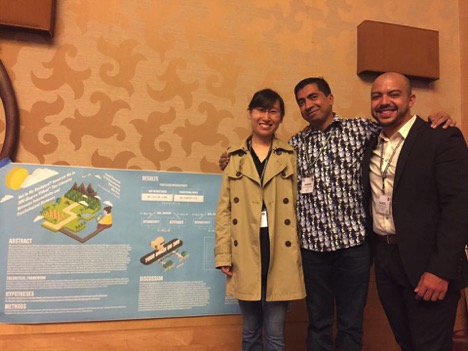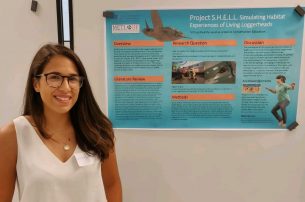METL at ICA 2017
The Media Effects and Technology Lab and the Department of Journalism was well represented at ICA 2017. We also hosted a very popular reception where we highlighted the Media Effects and Technology Lab.

Here are the papers and posters presented by METL members at ICA 2017:
Author: Sriram Kalyanaraman, Ph.D., Professor – Department of Journalism UF Online Learning Institute
Chair: The Use and Effects of New Media
Control Ergo Cogito: The Interplay Between Interactivity and Involvement on Information Processing
Co-Author: Lauren Darm Furey, Cal Poly Pomona
Abstract: In the current media landscape, people are bombarded with avalanches of information online. Such information deluges can not only hinder users’ enjoyment of online news, but they also constrain people’s ability to learn and comprehend information. To test whether interactivity is a solution to this problem, a 2 (interactivity level: low or high) x 2 (issue involvement: low or high) experiment was conducted, accounting for issue involvement because it is a factor that could alter the effects of interactivity. Results indicated that interactivity enhanced memory, which means it does hold the potential to help readers overcome the information overload often encountered online. Additionally, this study uncovered issue involvement as an important factor that can overshadow the impacts of interactivity, especially when it comes to attitudes.
“How Much Do You Say? What Do You Say?” Exploring the Interplay Between Information Complexity and Interactivity
Co-Author: Linwan Wu, University of South Carolina
Abstract: Information complexity is a prominent factor that influences online information processing, yet its psychological ramifications – especially in concert with technological affordances such as interactivity – have rarely been examined. Explicating information complexity in terms of information magnitude (Study 1) and information comprehensibility (Study 2), the current investigation examined the interplay between interactivity and information complexity on consumer responses in an e-commerce environment. Results from Study 1 indicated that interactivity positively influenced brand attitudes only when information magnitude was low. In Study 2, a high (versus low) level of interactivity elicited more favorable brand attitudes only when information comprehensibility was high. Both studies also identified perceived credibility as the underlying process of the positive effects of interactivity. Theoretical and practical implications of the findings are discussed.
“Not In My Backyard? Immerse Me in 360-Degree Video!” The Interplay Between Interactivity and Psychological Distance
Co-Authors: Daniel Pimentel, Sining Kong and Min Xiao,Graduate Students at the University of Florida’s College of Journalism and Communications
Abstract: 360-degree video has been touted as an interactive technology capable of closing “the global empathy gap” by bridging geographically distant communities through enhanced user control and shared experiences. However, it remains unclear if, and how, the interactive characteristics of the medium actually serve to reduce these geographical gaps between audiences. To investigate this possibility, we report preliminary results from a 2 (psychological distance: distant vs. proximal frame) x 2 (interactivity: 360 vs. non-360) between-subjects experiment that is currently underway to investigate the relationship between interactivity and psychological distance (spatial) in the context of environmental threats. Preliminary findings reveal 360-degree video to be significantly more interactive than traditional video, while also eliciting greater levels of cognitive absorption and behavioral intentions across both spatial conditions. Furthermore, 360-degree video appears to generate favorable attitudes and increased threat perceptions, when a threat is spatially distant versus proximal.
Posted: June 27, 2017
Category: Conferences


